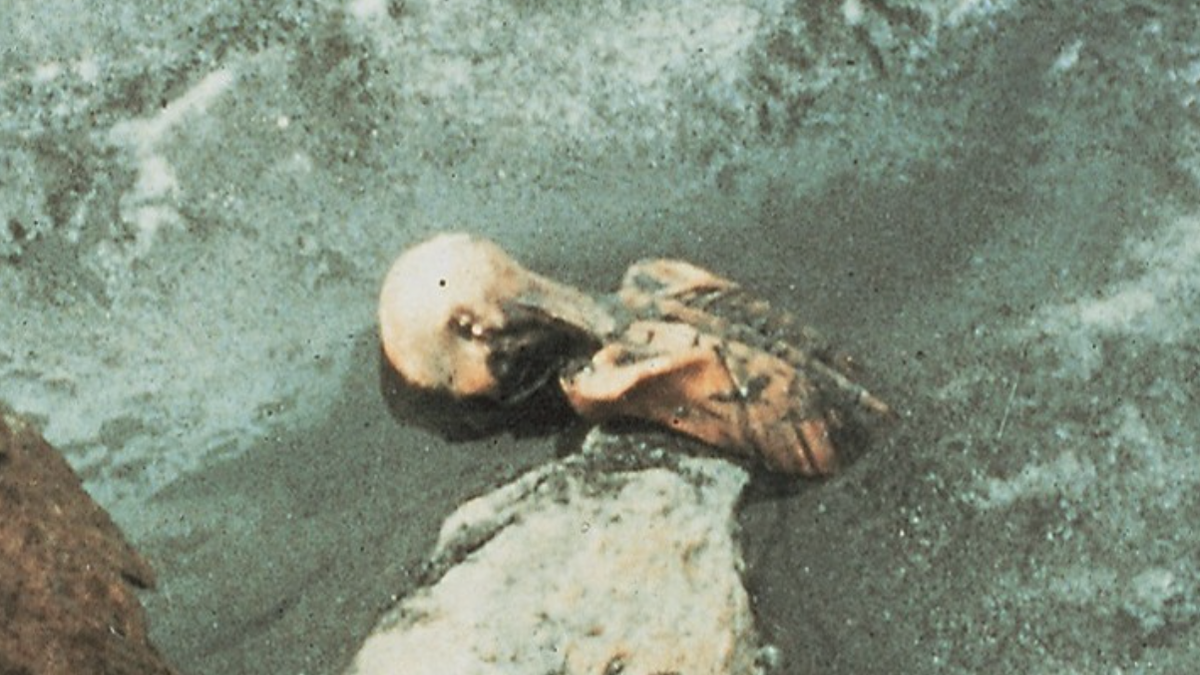Scientists Discover Ötzi the Iceman Wasn’t a White Guy With Long Hair
Through DNA analysis, scientists discovered that everybody’s favorite glacier mummy looked a lot different when he was alive than what they initially thought.
Shortly after Ötzi the Iceman was discovered in 1991 by some hikers in the Italian Alps, scientists reconstructed what he probably looked like.
Initially, they thought Ötzi had pale skin, a full head of hair, and a beard, but according to a new article in Cell Genomics, he actually had darker skin, dark eyes, and suffered from male-pattern baldness (and he was also obese and had Type-2 Diabetes).
Albert Zink, the head of mummy studies at Eurac Research and co-author of the article, explained that they thought Ötzi had hair because “no one could imagine that he was bald or at least, had advanced hair loss.”
He also added that they thought Ötzi had lighter skin when he was alive because they assumed his skin got darker as he was mummified in the glacier, but they realized that theory couldn’t be explained.
“As part of the conservation strategy, the Ötzi’s skin has been constantly checked using standardized photographs to detect any changes. There haven’t been any,” Zink said and added: “Now we know that the Iceman’s skin color was in fact, as we see it now.”

The significance of the discovery is that it creates a new image of what Europeans looked like 5,300 years ago and how they evolved and migrated.
Zink explained that we’re all closer than we realize. “It is therefore important to raise awareness of the fact that even in Europe, people have only recently become less pigmented and that subdividing human diversity by pigmentation makes no sense,” he said.
Johannes Krause, the director of the Max Planck Institute for Evolutionary Anthropology in Leipzig and co-author of the article, explained that at the time, many farmers in northern Italy like Ötzi had a similar genetic composition. However, their skin wasn’t as dark as the hunter-gatherers who lived in Europe before them.
“These hunter-gatherers would have had blue eyes and such dark skin that genetically speaking, we cannot distinguish them from people south of the Sahara today,” Krause said. “This is a very unusual phenotype, quite different from the way we have until now imagined the original Europeans.”
Krause added that by the Bronze Age, genes for light skin color were spreading faster through Europe because they were better suited to survive in areas that received little sunlight during winter time.
Both scientists, however, point out that Ötzi is but one sample and they’ll need many more before determining if he’s representative of the population or an outlier.
In a statement, Elisabeth Vallazza, director of the South Tyrol Museum of Archaeology, which houses Ötzi’s body, said she’s cautious of the findings.
“The current study identifies certain genetic hereditary factors and discusses how Ötzi may have looked,” Vallazza said. “And I will be delighted if future research helps us obtain a more concrete image of this person who lived more than 5,000 years ago.”
Vallazza explained that Ötzi’s image was reconstructed in 2011 by paleo-artists using the best research available at the time.
“The main purpose was to show that Ötzi was a modern human. Middle aged, tattooed, wiry, weathered, a person like you and me,” she said. “There are currently no plans to revise the reconstruction.”
Source: https://outdoors.com/scientists-discover-otzi-the-iceman-wasnt-a-white-guy-with-long-hair/







